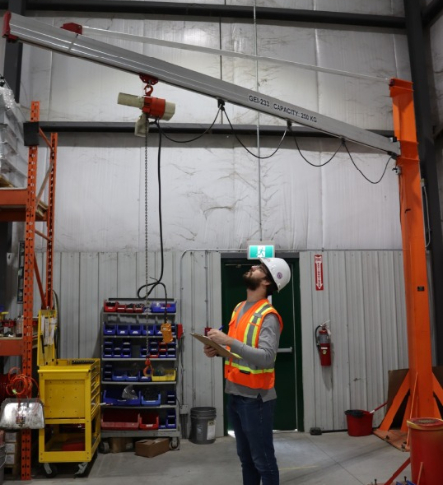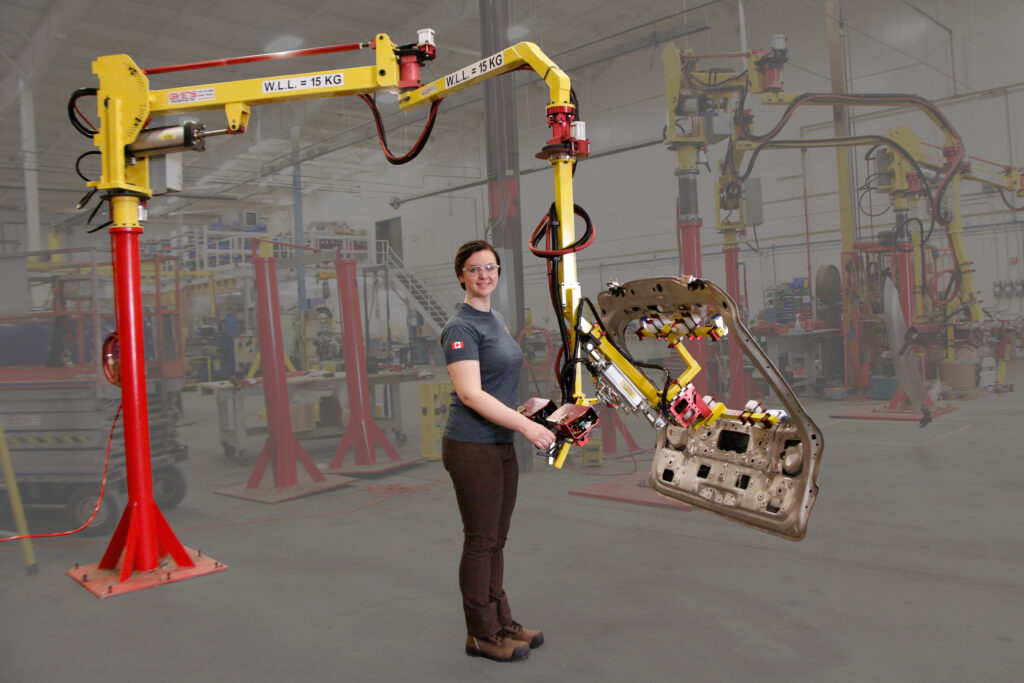
In today’s fast-paced industrial environments, worker safety and efficiency are more important than ever, creating the need to integrate ergonomic principles into material handling equipment. Proper ergonomics not only improves productivity but also reduces workplace injuries, fatigue, and long-term health risks.
Ergonomics focus on designing equipment and creating workflows that align with the way you move naturally, therefore minimizing possible strain and injury. When applied to material handling, ergonomic solutions can:
1. Improve Working Posture and Range of Motion
Poor posture and restricted movements are the leading causes of musculoskeletal disorders (MSDs) in industrial settings. Ergonomic material handling equipment—such as adjustable lift tables, articulated arms, and conveyors that are height adjustable help workers maintain neutral body positions, reducing stress on the spine, shoulders, and joints. By allowing natural ranges of motion, these tools prevent overextension and awkward bending, leading to greater comfort and long-term health.
2. Reduce Long-Term Exposure to Repetitive Tasks and Heavy Lifting
Repetitive motions and heavy lifting contribute to chronic conditions like tendinitis, carpal tunnel syndrome, and back injuries. Automated and semi-automated ergonomic solutions—such as vacuum lifters, pallet positioners, and powered conveyors—minimize manual strain by handling the bulk of the workload.
3. Eliminate Reach Restrictions and Minimize Operator Travel
Traditional material handling often requires workers to stretch, bend, or walk excessively to move items. Ergonomic equipment like rotating workstations, extendable arms, and mobile material carts allows materials to move through a wide range of travel while keeping the operator in an optimal position.
4. Distance Workers from Hazards
Material handling often involves risks such as:
- Pinch points (gears, rollers)
- Crush hazards (heavy loads, machinery)
- Cut risks (sharp edges, blades)
- Exposure to toxic, chemical, or electrical materials
Ergonomic solutions like remote-controlled manipulators, automated guided vehicles (AGVs), and enclosed handling systems keep operators at a safe distance from dangers while maintaining efficiency.

Overall the key takeaways:
Investing in ergonomic material handling equipment is a cost-effective strategy that:
- Reduces workplace injuries
- Boosts efficiency
- Improves employee morale
- Ensures compliance (meets OSHA and NIOSH ergonomic guidelines)
Companies that prioritize ergonomics in material handling see long-term benefits in workforce health and operational performance. Whether through adjustable workstations, automation, or hazard-minimizing tools, ergonomic solutions are a smart investment for any business focused on safety and productivity.
Your Voice Matters: Share Your Experience with Givens
We couldn’t do it without you. At Givens, we value your feedback immensely. Your experience with us matters, and we’d love to hear your thoughts. If we have completed a project in the past for your business we ask that you take a second to leave us a review on Google, your insights will help others discover the quality of service we strive to provide.
Click here to leave your review effortlessly. Thank you for being a part of our journey. We look forward to hearing from you!
FIND US
sales@giveng.com
or
(519) 453 – 9008
or
327 Sovereign Road
London, ON, Canada
N6M 1A6
